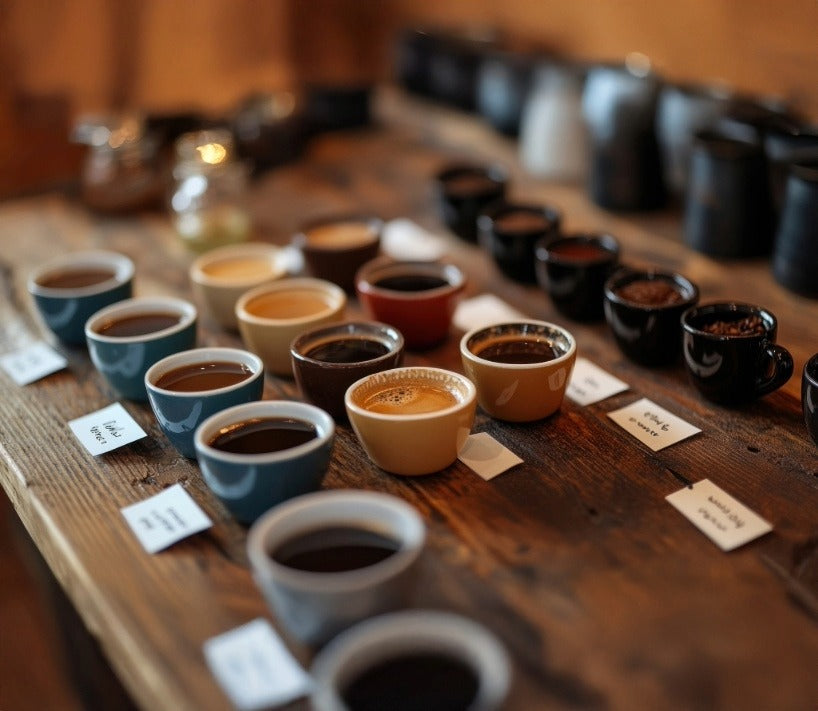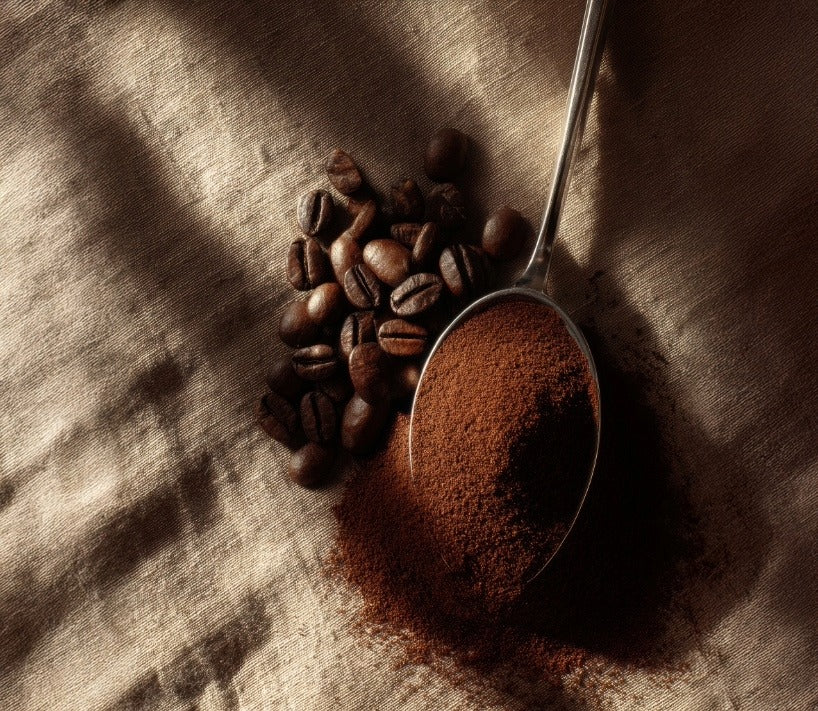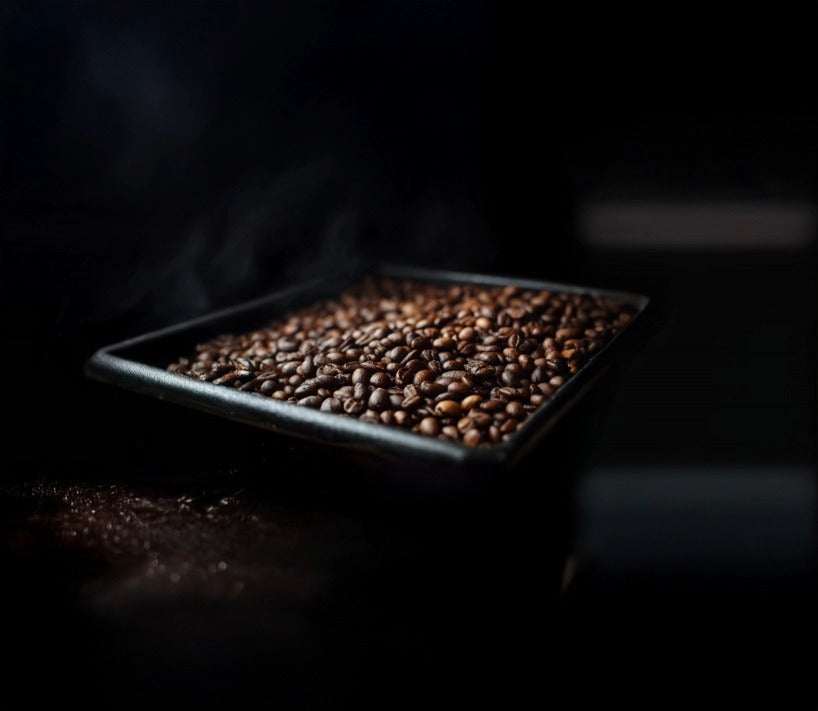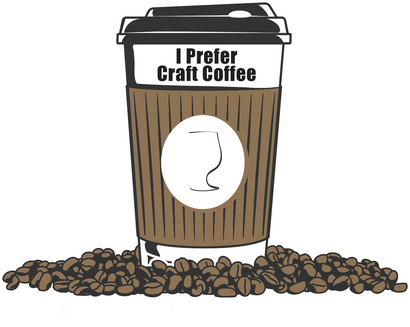How Many Bean Varieties Exist—and Which Ones Taste Best in Top Specialty Coffee Online?
April 19, 2025 5 min read
Decoding the Coffee Gene Pool: How Many Bean Varieties Exist—and Which Ones Taste Best in Specialty Coffee?
“So…how many beans are on this menu, anyway?”
Ever walk into a specialty café, glance at the chalkboard, and feel like you’ve accidentally enrolled in a plant‑biology seminar? Gesha, Pink Bourbon, SL28—sounds more like a trendy baby‑names list than coffee, right? If you’ve ever Googled best coffee online or muttered “Where can I buy fresh coffee beans near me?” you’ve probably bumped into a bewildering parade of bean varieties.
I used to assume coffee was basically two playlists: Arabica for the fancy folk and Robusta for the 4 a.m. truck‑stop espresso. Then I fell down the rabbit hole—er, coffee chute—and discovered a genetic universe wilder than my first cold‑brew buzz. Today, I’m handing you the decoder ring so you can impress friends, pick the best tasting whole bean coffee, and dodge marketing mumbo‑jumbo.
The Juicy Details You Came For
1. The Four Major Species (Yes, More Than Two Exist)
| Species | % of Global Production | Flavor Snapshot | Typical Use |
|---|---|---|---|
| Coffea arabica | ~60–65 % | Sweet, floral, fruity, endless nuance | Specialty coffee flagship |
| Coffea canephora (Robusta) | ~35 % | Earthy, bitter, high caffeine, heavy body | Espresso blends, instant coffee |
| Coffea liberica | <2 % | Jackfruit‑like, smoky, quirky acidity | Niche craft scenes in Asia |
| Coffea excelsa (technically a Liberica subspecies) | Tiny sliver | Tamarind tartness, tea‑like | Experimental single origins |
Most specialty roasters focus on Arabica because its seed genetics generate the nuanced aromas we all brag about on Instagram. Robusta shines in crema and caffeine, but rarely top‑scores on quality cupping tables. Liberica and Excelsa? Think of them as indie bands—cult following, limited release, sometimes mind‑blowing.
Bottom line: While there are 120+ wild Coffee species in nature, only these four hit the commercial stage.
2. Inside Arabica: A Galaxy of Cultivars & Hybrids
If Arabica is a music genre, its varietals are individual artists. World Coffee Research catalogs 60+ named Arabica cultivars, but if you include every sub‑strain, local landrace, and experimental cross, the list balloons into the hundreds. A few headline families:
-
Typica Lineage – The OG brought from Yemen in the 1700s. Delicate sweetness, florals.
-
Bourbon Lineage – A spontaneous mutation of Typica on Réunion Island; richer body and fruit sweetness. Branches include Caturra, Catuai, and Pink Bourbon (yes, it’s actually pink on the tree).
-
Ethiopian Heirlooms – Thousands of hyper‑local landraces; think jasmine and berry explosions.
-
SL‑Series – Kenya’s research darlings (SL28, SL34) celebrated for black‑currant zing.
-
Gesha (aka Geisha) – A Panamanian Cinderella story: tea‑like, floral, peachy, record‑shattering auction prices.
-
Hybrids/F1s – Crossing Arabica with itself (or sometimes a dash of Robusta) to boost disease resistance while protecting flavor—e.g., Catimor, Castillo, and the newer Centroamericano.
Quick math time: Four main species + ~60 common Arabica varietals + a steady stream of experimental crosses = well over 100 distinct bean identities that might end up in your grinder.
3. The “Best‑Tasting” Varietals for Specialty Sipping
Taste is subjective, but cupping scores, barista competitions, and consumer polls do highlight consistent rock stars. Let’s tour a dozen crowd‑favorites, each paired with a flavor snapshot and why they win on the specialty stage.
-
Gesha – Ethereal jasmine, bergamot, and peach; velvet body. Perfect for slow Sunday pourovers.
-
SL28 – Vibrant black‑currant, citrus, and honey sweetness; crisp acidity. Iconic in Kenyan lots.
-
Ethiopian Landraces (e.g., Kurume, Wolisho) – Blueberry muffin, floral bomb, tea‑like body. Your good coffee to drink black dream.
-
Pink Bourbon – Strawberry aromas, silky mouthfeel, gentle citrus; Instagrammable pink cherries pre‑harvest.
-
Pacamara – Giant beans, tropical fruit meets dark chocolate, surprisingly creamy.
-
Maragogipe – Another “elephant bean”; nutty caramel, low acidity, big body. Fun for espresso nerds.
-
Caturra – Compact plant, accessible sweetness, versatile across processing methods.
-
Catuai – Balanced sugar‑brown flavors, dependable in Brazil’s best espresso beans.
-
Villa Sarchi – Sparkling acidity, candy sweetness; Costa Rican sweetheart.
-
Heirloom Liberica Hybrids – Wild jackfruit funk, smoky sweetness (an acquired taste but unforgettable).
-
Castillo – Notorious in Colombia: disease‑resistant, diverse cup profiles from red apple to panela.
-
Java – Belgian monks’ relic: soft chocolate, herbal, understated acidity—excellent for filter newbies.
Will every Gesha blow your mind? Not necessarily. Farming practices, elevation, harvest timing, and processing methods can turn even superstar genetics into a mediocre cup—or transform under‑the‑radar cultivars into award‑winners. Still, the list above appears in championship brewers’ cups year after year.
4. Does Variety Guarantee Flavor? (Spoiler: No)
Imagine buying heirloom tomato seeds and planting them in concrete rubble. Same logic applies to coffee. Bean genetics are one slice of a quality pie that also includes:
-
Terroir – Altitude, temperature swings, soil nutrients.
-
Agronomy – Shade management, pruning, organic matter.
-
Processing – Washed, honey, natural, anaerobic, carbonic maceration (coffee’s answer to sour beer).
-
Roasting & Resting – A master roaster accentuates varietal quirks; a dark roast can bulldoze them.
-
Freshness – Brewing that best small batch coffee within 2–4 weeks of roast, not six months later.
When those variables align, the result is a sensory mic‑drop—think 90‑plus SCA cupping scores that judges compare to mango sorbet and honeysuckle. Miss a step, and you’re sipping cardboard.
5. How Many Varieties Should You Try?
Here’s the fun part: exploring becomes its own hobby. You don’t have to roast your own beans or memorize genetic charts. Try this home‑barista flight plan:
-
Pick a Species Sampler – Brew an Arabica next to a fine‑grade Robusta. Notice body and caffeine kick.
-
Do a Bourbon vs. Typica Shoot‑Out – Same roaster, similar roast level, cupped side by side.
-
Track Your Tasting Notes – Fruity? Nutty? Wine‑like? Build a personal flavor map—handy for choosing best espresso beans later.
-
Subscribe to a Rotation – Many quality roasters (the type you’d call best specialty coffee online) curate month‑to‑month varietal spotlights delivered to your door.
-
Gift the Journey – A mix‑pack makes an unbeatable presents for coffee lovers idea—and you get tasting buddies.
Pretty soon, phrases like “anaerobic Pink Bourbon natural” will roll off your tongue with the ease of “medium‑rare rib‑eye.”
Your New Bean Superpower
Knowing there are 100‑plus commercial varieties means you’ll never again settle for a vague label that simply says “100 % Arabica.” Instead, you can:
-
Decode Menus – Spot a Gesha pour‑over? You’ll know why it costs like a concert ticket.
-
Shop Smarter Online – When searching best craft coffee online or buy specialty coffee online, filter by varietal to match your flavor goals.
-
Educate Friends – Hand someone a Pink Bourbon sample and casually drop, “It’s a spontaneous mutation of the Bourbon family.” Instant street cred.
-
Reduce Buyer’s Remorse – Pick beans aligned with your palate (fruit‑forward SL28 or chocolatey Catuai) and avoid pricey experiments that gather dust.
Remember, the best craft coffee at home isn’t just about gadgets or latte art; it’s the synergy of genetics, terroir, roasting, and—most crucially—your informed choice as a drinker. Armed with varietal know‑how, you’re officially promoted from “coffee fan” to “flavor explorer.”
So next time the barista asks if you’d like to try the new Maragogipe natural or the honey‑processed Villa Sarchi, you can nod with confidence—and maybe, just maybe, taste something that rewires your morning routine forever.
Happy brewing, fellow bean nerds!
Also in Best Coffee To Buy Online Education

What Makes Specialty Coffee Taste Better: The Real Reason
December 19, 2025 4 min read
I’ve also roasted thousands of pounds of air roasted coffee beans, shipped fresh roasted coffee beans online, and helped tons of people upgrade from “meh” to “HOLY FLAVOR” with tiny changes.

How To Choose Specialty Coffee Beans the Easy Way
December 18, 2025 4 min read
Fresh roasted coffee beans online should tell you when the beans were roasted… not when the bag expires in 2028.

Best Gift For Coffee Lovers: Why Beans Beat Gadgets
December 17, 2025 4 min read
Here’s the truth: the best tasting craft coffee at home doesn’t come from gear.
It comes from fresh, high-scoring specialty coffee roasted by someone who cares more about your morning cup than their own.
